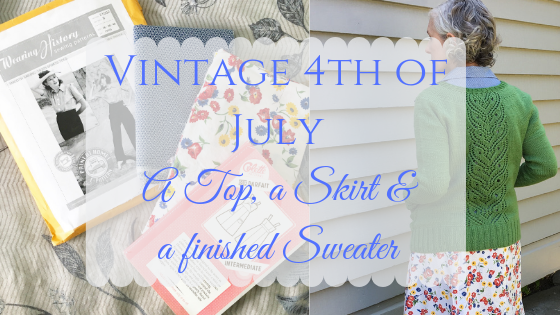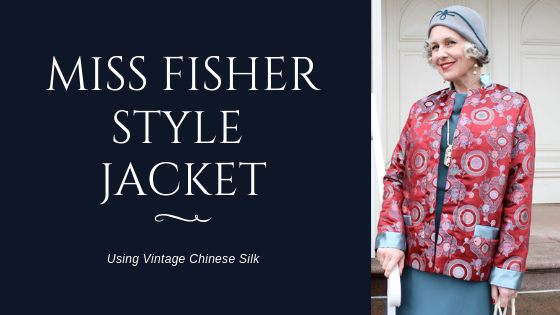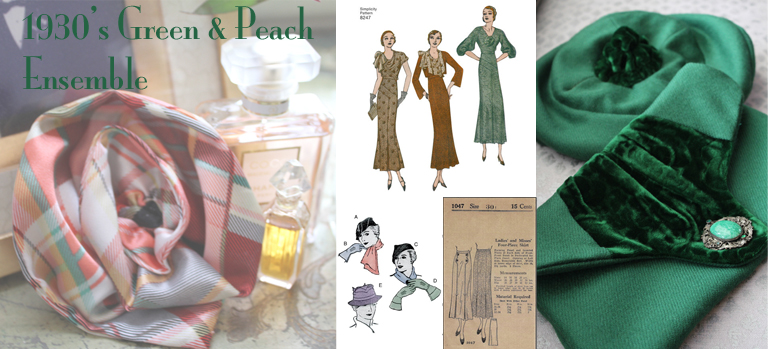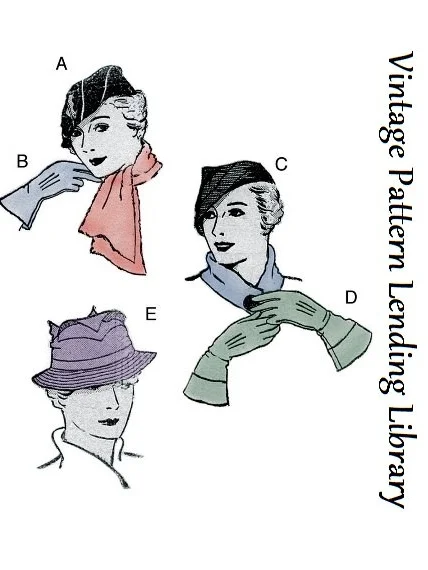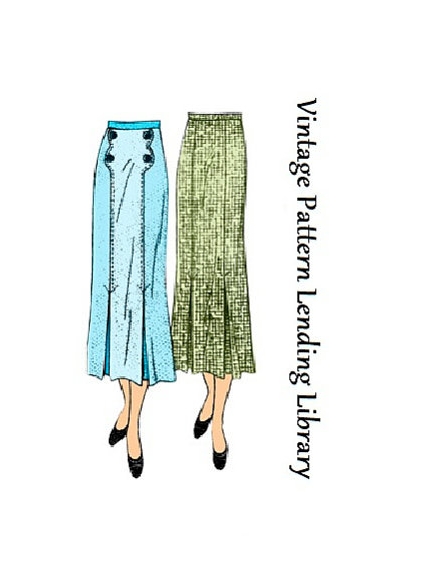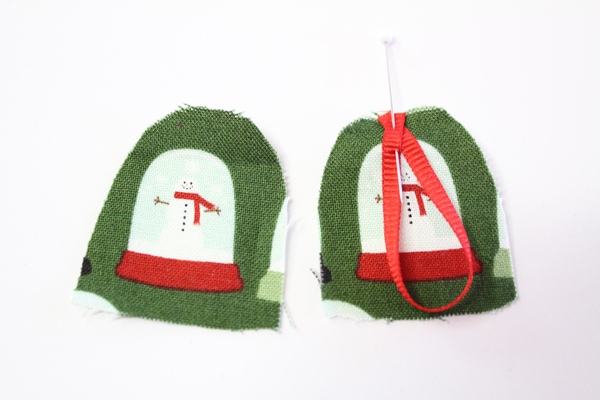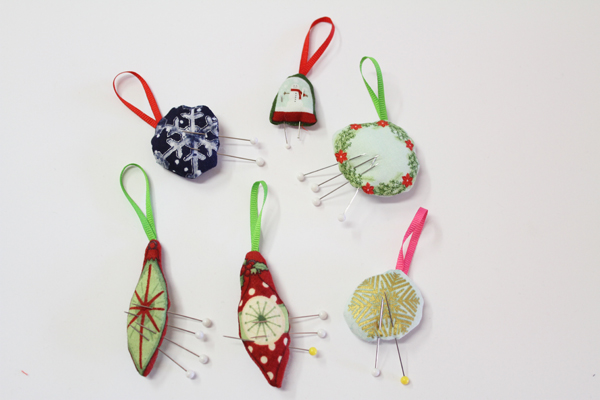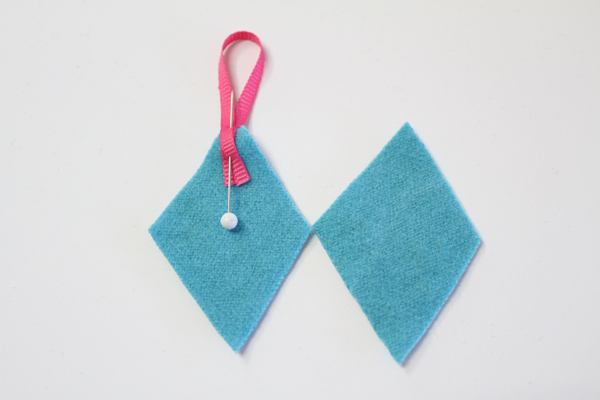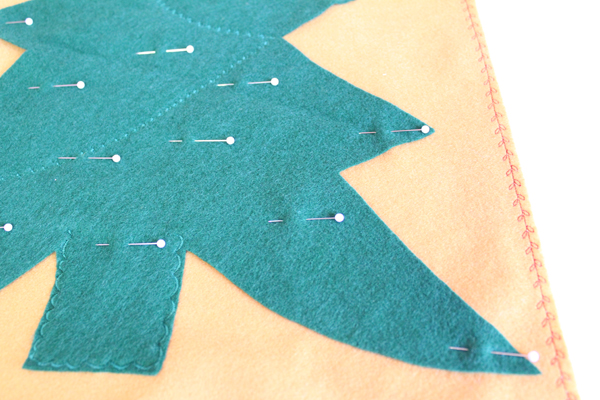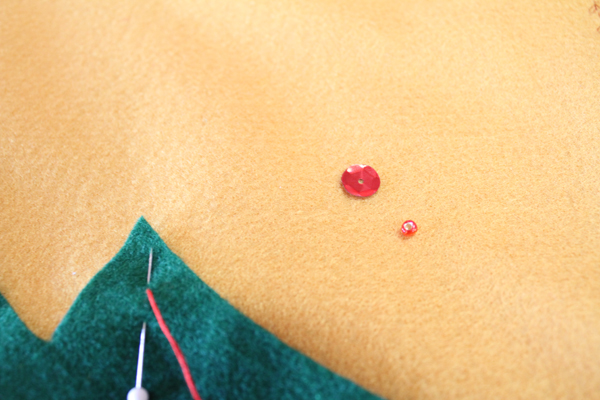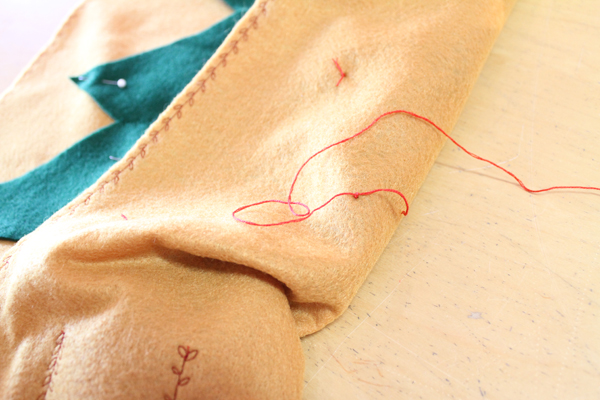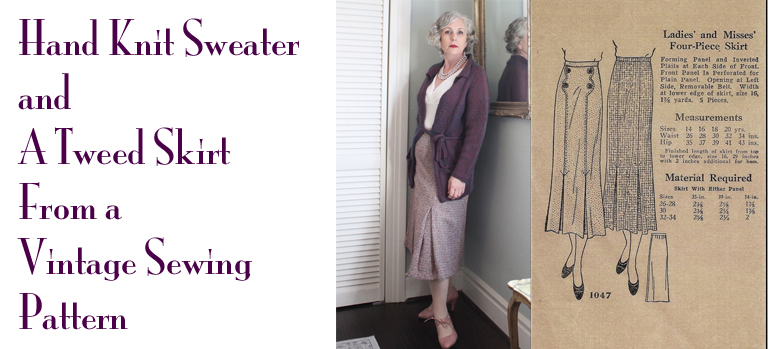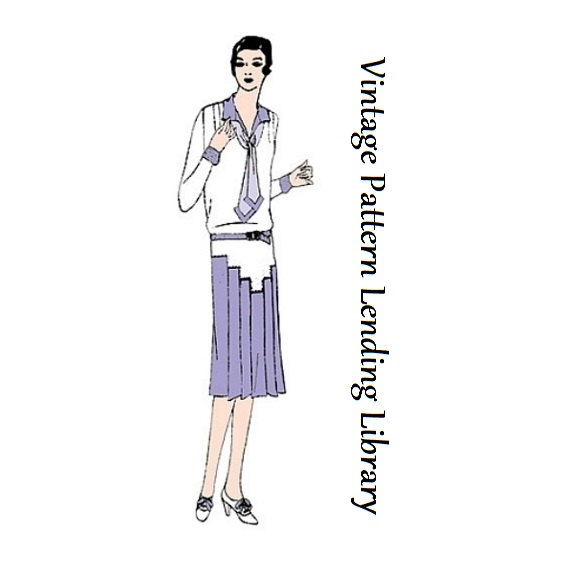During the week of Independence Day, I had the week off from teaching. What better way to celebrate than to get to sewing. I had just found a beautiful 1930’s style floral quilting cotton that coordinated with a blue and white fabric I’de been saving for a blouse. My plan was to re-make the Wearing History Smooth Sailing Blouse with a coordinating from the floral fabric.
Read moreSewing a Miss Fisher Style Jacket with Vintage Chinese Silk
Today’s post is about a 1920’s Short Car Coat I finished just last week. The fabric for the jacket/coat has been in my stash for the last several years. I was planning on making it to go with the blouse and skirt I’m wearing in the photos, for Miss Fisher Con, which was almost 1 year ago (already?). It didn’t quite happen in the time I originally planned to make it, but an occasion came up and It seemed like a faster make than finishing a sweater, so off I went.
Read moreSewing a 1930's Blouse, Hat & Skirt
It’s been busy over here at The Sewing Room and finishing this ensemble took some time. I think the blouse was one of my longest running projects in quite sometime. Partially, because of other projects that got in the way and also because I did a LOT of hand finishing.
Read moreSewing a 1930's Fall Ensemble - Silk Blouse & Wool Trousers
It’s Fall here (finally) in Northern California and the trees are starting to turn. And by Fall I mean it’s gotten hot in the days (upper 70’s F) and cools off at night. Not quite jacket weather, in the daylight, but it feels good to dip into the fall colors.
Read moreRepairing a 1930's Orange Chiffon Evening Gown
My Vintage Fairy Godmother has been quite active over the last few months. In fact, I’m actually quite lucky to have friends that give me vintage pieces that they no longer want or don’t know what to do with. The story behind this ensemble, definitely falls into this category.
Read more1930's Sleeves - Weirdly Wonderful and Over the Top!
I’m getting ready to put together a Fall outfit and am very excited about working with some of the fabrics I’ve put aside - lots of luscious wools and silks in gold tones. And I bought a terrific 1930’s hat at the Alameda Point Vintage Fashion Faire, last weekend. So when Wardrobe Shop and Nataya approached me to do a sponsored blog post with this article, I couldn’t refuse.
Read moreSide Tracked from my Sewing Goals - 1930's Green & Peach Ensemble
Have you ever come across the perfect fabric that goes with another fabric you've been waiting to do something with? Well, this darling plaid came into my life and I just had a to make a new outfit around it. It's a synthetic Charmeuse, which is not a regular go-to for me. I much prefer silk. However, when I saw this plaid which was printed on the diagonal, it really screamed 1930's blouse, right at me! AND it matched perfectly with a beautiful green wool that's been waiting to be made into something for quite some time.
This outfit doesn't exactly fit into my "Miss Fisher Wardrobe" goals, but it does kind of echo some of silhouettes of the (Miss Fisher) era worn between 1928 - 1932, and definitely covers the "Colorful" way she dresses on a regular basis. The emerald green of the wool is one of my favorite colors and I couldn't pass up the opportunity to make this skirt, for which I had a pattern waiting in the wings. I've used this pattern twice before, once recently using a wool tweed and made slightly shorter. You can see the post for that skirt by clicking here.
Having more fabric than I needed for the skirt, my mind wandered into the world of accessories. I've been wanting to try out a couple different patterns - one for a 1930's hat and one for a clutch from a book that I had on my shelf. I found a small piece of velvet in a coordinating color (to the green) that I was able to use for both the hat and the clutch to give them each a little depth and contrast. The top piece of the hat, which makes the point is actually a circle that is gathered in 3 spots fitting into the circle of the next piece. The hat is comprised of 4 hat pieces (3 for the top and one for the side) and a hat band that finishes off the bottom edge. The pattern did not call for lining, but I added some because it gives some structure to the finished piece. I really like the very 1930's, whimsical nature of this silly little almost "beret".
For the clutch, I had originally planned to add a trim between the velvet and the wool, but got so excited to finish the bag, that I forgot. In the end, It's fine without the trim. I added a stone and filigree broach to give it some pizazz.
The Blouse was made from a Simplicity re-issue of a 1930's dress pattern, and shortened to blouse length at the hip. I used the version with a v-neck & 3/4 length puff (at the cuff) sleeves, that seemed to suit the fabric being used. It is a raglan sleeve made from what appears to be a kimono style shape, with a dart at the shoulder. If I do use this pattern again, I will re-shape the raglan armholes and side seams so it fits a bit better under the arm and around the bust. It does not hang perfectly in this area, which is my only disappointment with the whole project in general. No reason to complain overall.
Also, I added a little tab at the front neck so that I could loop a bow through it or hang a flower from it which is a very '30's detail. In the photo above you can see the flower I made by creating a long double sided triangle and gathering the bottom straight edge. Rolling the gathered edge and sewing it at the bottom, creates the rose-like shape. The fabric color pattern, serendipitously, arranged a black point at the center of the flower. The flower was finished off with a tab of it's own that snaps in place around the tab on the dress.
Here is the lineup of all the patterns used along with my accessories:
- Blouse - Simplicity 8247 reissue of a 1930's Dress
- Skirt - Vintage Pattern Lending Library - 1936 Ladies Skirt - #T1047 - re-sized to fit my body measurements
- Hat - Vintage Pattern Lending Library - 1930s Ladies Hat, Scarf & Gloves - #H2851
- Clutch - Making Vintage Accessories: 25 Original Sewing Projects Inspired by the 1920s-60s by Emma Brennan
- Shoes - Decobelles and Angels Shoes from Argentina - Style Leah
- Necklace - Hotcakes Design
- Scarf & Pin - both vintage and gifts from either a friend or my mom
- Belt - 1 1/2" wide vintage grosgrain ribbon and vintage green celluloid belt buckle. Buckle bought from VictorianButtons on Etsy
- Earrings - Feathered Outlaw Alameda
Until Next Time, Happy Sewing!
Jennifer
Vintage Coat Crusade - Re-Fashion & Restoring my Vintage Coat Collection
I've amassed a bit of a coat collection over the last year. Two of these beautiful coats were given to me, one was purchased at a Vintage Fashion Faire and I even made two myself - a Black 1920's Straight Coat & a Red 1930's long swing coat. For the coats, I didn't make some of my favorite acquisitions needed a little freshening up and/or restoration.
Read moreMy Sewing (& Knitting) Plans for 2018
What are your Sewing Plans for the New Year? I already have a long list of things I would like to accomplish with the knowledge that there probably won't be time for everything on my list. In any regard, I'm very excited to get started. Take a look below at some of the things in the works....
Read moreSmooth Sailing Sports Togs- A Pattern Review
Pictured here is a 1940's (or late 1930's) outfit that I sewed up using the Wearing History Smooth Sailing Sport Togs Shirt and Trousers pattern. LOVE, LOVE, LOVE!!!! This pattern is great. The blouse needs a little work in the armhole, but otherwise...
Read moreGet Crafty for the Holidays - Make a Vintage Style Advent Calendar
In the 1970's my aunt Sharon made our family an Advent Calendar. It's crafted almost entirely of acrylic felt and quite a testament to the crafting movement of the era. I'm very sentimental about it, even though we were not particularly religious, growing up. I just remember waking up each day, excited to put another ornament on the tree. Thankfully, my mom kept it around for the years after I left home and then gave it to me later on. We carry on this tradition at home today and my 14 year old daughter feels as sentimental about it as I do.
This is the "Vintage" Advent Calendar that we use for Christmas every Year
Here are some of the ornaments that hide in the pockets of the calendar.
A few months ago, one of my dear Bridal clients (from when I did that) dropped by to donate some sewing materials her son acquired from an estate sale. Inside were these tiny little ornaments, exquisitely and painstakingly beaded. I knew they would come into some use, when I saw that they were all Christmas themed. So that is what led me to re-make this wonderful holiday craft. I've put together 6 kits that we are selling ($50 each) with either a mustard or Aqua background. You can buy them from me, or make your own using the directions below. Either way, I hope you enjoy! And Happy Holidays to you and your families!
Directions for Advent Calendar:
Materials list -
- Craft Felt - Wool or acrylic in multiple colors - 1 rectangle measuring 36 1/2" long x 17" wide, 3 rectangles measuring 2 1/2" long x 17" wide (for pockets) in the same background color, 3/4 yard green for the tree and misc. felt squares for the ornaments.
- Ribbon or cord for the ornaments - 2 yards narrow width (1/8" or smaller)
- Cotton holiday print fabric for ornaments - I bought several fat quarters and then cut out the shapes as they were the perfect size. Note: You may have to do some hunting around to find the right fabric, or just make more ornaments out of felt. Our calendar has little pieces of holiday cards with ribbon hangers glued on in addition to the felt ornaments.
- Various additional tiny ornaments that are small enough to put in the pockets - I bought these from a craft store. note: you need 24 ornaments in all, so it's nice to have a few that are already made.
- A small amount of polyester or cotton fiberfill for stuffing the ornaments.
- 1 package of large red sequins - I think ours were 8mm and you will need 24 total.
- 24 small glass beads - these are used in combination with the sequins and the ornaments will hang from these
- (1) 3/8" diameter wooden dowel 18" long - I had an 1/8" whole drilled 1/2" away from each end.
- 36" of narrow (1/16") cording for the hanger.
- Misc. beads and sequins for decorating the ornaments.
- Thread, sewing machine, waxy tracing paper (for transferring numbers), tracing wheel and all your standard sewing tools.
STEP ONE making the fabric ornaments -
- Cut around shapes leaving 1/8"-1/4" seam allowance. You will need two for each ornament.
- Cut a 3" piece of narrow ribbon or cord for the hanger and pin in place as indicated in the photo.
- Place right sides together and pin around outer edge.
- Stitch around outside edge, leaving small space along the bottom, to turn right side out.
- Turn ornament right side out and stuff with a little bit of fiberfill.
- Fold seam allowances to inside and pin in place. Hand stitch closed, using a slip stitch or ladder stitch.
STEP TWO - Making the Felt Ornaments
- Cut two pieces of felt in the shape you want (we have a diamond shape and a rectangle pictured).
- Cut 3" long piece of narrow ribbon or cord and pin to wrong side of felt at top of ornament, as indicated in the photo.
- Place a small amount of fiberfill on wrong side of one piece and place the other side of the ornament with wrong sides together.
- Pin around outside edge then stitch together around entire outside, making sure to catch the hanger in your stitches.
- Decorate your ornaments with top stitching or beads as you desire.
STEP THREE - Prepping the pocket rectangles
- Sew a decorative stitch across the top edge (on long edge) of each pocket rectangle. I use this same stitch for all the decorative stitching on the back ground pieces and the pockets, but feel free to change it if you want to use more of the stitches your machine offers. Note: you do not want to use stitches that will be wider than 1/4" as this will make the pockets too small.
- Trim the rectangles to fit the background width.
STEP FOUR - Transferring the numbers to the pockets.
- In my kit, I've created a template for the numbers. If you are doing this on your own, you will need to create a template. It's easy to do in Microsoft Word or Google docs. You will just need to create a TABLE with columns measuring 2" wide x 2 1/2" tall with 1/8" wide columns in between. Find a font you like and type in numbers 1-24 in each of the larger cells. Pick a font size that works so that the numbers fill up the box.
- Print and cut out, your numbers, then tape them together in 3 rows: 1-8, 9-16 & 17-24. Make sure they fit within the 17" width with 1/4" space on the outer edges.
- Transfer the numbers to the pocket rectangles using tracing paper and a smooth edged tracing wheel.
- Filling in the Numbers - I stitched on the transferred numbers using a machine straight stitch and had to go over them a few times. You can also hand embroider the numbers or use fabric paint. The original calendar was done using fabric paint.
STEP FIVE - Creating the dowel casing
- Fold top edge of calendar rectangle (background) to back side 1 3/4" & pin in place.
- Using a decorative stitch, sew a line of stitching across the top edge using 1/2" seam allowance.
- Using the same decorative stitch, sew another line of stitching across the top edge using 1" or 1 1/4" seam allowance. There should be at least a 3/4" space between the stitch lines.
STEP SIX - Finishing the Pockets
- Place the finished pocket rectangles at the bottom of the background rectangle on the front side. The rectangles should be flush to the sides and bottom edge and 1/2" apart. Pin in place.
- Using a decorative stitch, stitch around the outside edge of background rectangle, starting and ending at the lower dowel casing stitch line,You do NOT want to stitch through your casing. Also, make sure your decorative stitch lands about 1/8" away from outer edge.
- Mark vertical lines, either with chalk or a steam away pen, between the numbers. Then, stitch between the numbers, vertically, along those lines, using your decorative stitch.
STEP SEVEN - Attaching the Tree
- In my kit, the trees have been pre-cut . If you are making this on your own, you will need to create a tree pattern. Ours measures 20" long x 16" at the widest point. There are 5 branch points on each side tapering in fullness from bottom to top.
- Place your tree evenly between the two sides and between the pockets and the bottom edge of dowel casing. Pin Trunk in place.
- Using a decorative stitch, stitch trunk in place, around it's three edges.
- Pin tree in place so it won't move and, using a decorative stitch, stitch swags diagonally across tree.
- Note: the original calendar had the tree glued in place in various spots. I chose not to clue, but to sew, in order to secure the tree in place.
- Mark the spots of your sequins by placing 24 pins through the tree in an organized fashion. Take a look at the finished tree for general placement.
STEP EIGHT - Sewing on the sequins (ornament holders)
- Divide a strand of embroidery floss into sections. Mine has 6 plies and I divided into two strands of 3 plies each.
- Thread a needle with your floss and, from the back side, pock through the tree at one of the pinned positions. Leaving about 1 1/2" of thread on the back side, load a Sequin (curved edges up) and a bead onto the needle. Push the sequin and pin down the thread to the tree.
- Now, put your needle through the sequin again and back through the tree to the back side of the calendar. The sewn bead will secure the sequin in place.
- Using both ends of your floss tie a double knot to finish securing the bead and sequin in place.
- Trim your thread, and repeat for the other 23 sequin/bead ornament holders.
STEP NINE - Dowel & Hanger
- Push dowel through casing at top edge of calendar, leaving 1/2" exposed on each end.
- Using a 36" long piece of 1/16" diameter cording, thread through holes on each end of dowel. (Ends of cording should exit holes toward bottom of calendar. )
- Double or triple knot cording ends on each side, to prevent from exiting holes.
- Note: if you do not have a drill to make 1/8" holes in dowel, just make a slip knot loop at each end of cording and slip on to dowel ends.
You are All Done! Just place ornaments in pockets and hang on the wall on December 1st.
Until next time, Happy Sewing!
xo
Jennifer
A Tweed Skirt Story - Comparing Body Measurements to Pattern Measurements
In this post, two recently finished projects will be highlighted, but will the main focus will be on MEASURING. The Bay Area Sewists met up at The Sewing Room a couple of weeks ago to talk with me about pattern measuring.
Read moreHelp Me Decide which 1930's dress to make for Gatsby 2017
The Art Deco Society of California's Gatsby Summer Afternoon, is right around the corner. Slated for Sunday, September 10th, this annual event will take place on the majestic grounds of the Dunsmuir Hellman Estate in the Oakland Hills. Hundreds of people enter the grounds dressed to the nines in gorgeous picnic attire....
Read moreA 1920's Blouse Done 3 ways with One Vintage Dress Pattern - Miss Fisher Wardrobe or Bust!
The original pattern
As part of my quest to build a "Miss Fisher" wardrobe, I've sewed up three little blouses inspired by separates her character wears in different episodes. This post will show you 3 blouses I have made, starting with one pattern and explain how you can do it too!
Read more
